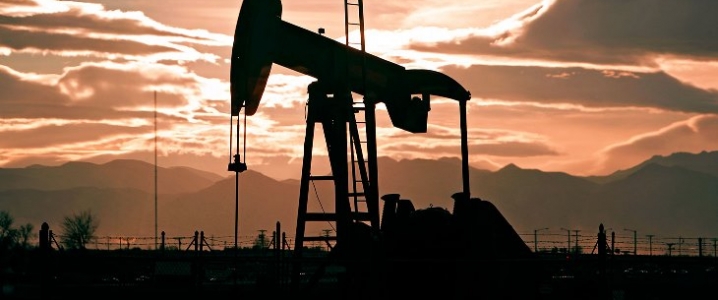www.aljazeerah.info
Opinion Editorials, May 2017
Archives
Mission & Name
Conflict Terminology
Editorials
Gaza Holocaust
Gulf War
Isdood
Islam
News
News Photos
Opinion Editorials
US Foreign Policy (Dr. El-Najjar's Articles)
www.aljazeerah.info
Saudi vs Shale: The Breakeven Myth By Irina Slav Oil Price, Al-Jazeerah, CCUN, May 23, 2017 |
 |
 |
|
Saudi Arabia is well known for its super low production costs for oil. In fact, its oil is almost the cheapest to extract. Only Kuwait sports even lower costs, according to a ranking by Rystad Energy and CNN. And yet, the Kingdom has been at the forefront of production cut efforts as it obviously can’t cope with the current price levels.
According to a Wall Street Journal breakdown of production costs per barrel for 13 large producers, Saudi Arabia can extract a barrel of crude at US$8.98, just a little bit less than Iran, at US$9.08. To compare, the cost per barrel of U.S. shale comes in at US$23.35.
This cost includes taxes, pure production costs, administrative costs, and capital expenditure. When it comes to production costs, Saudi Arabia actually ranks below Iraq, Iran, and Russia, but in other areas—taxes for example—it has an advantage over almost everybody else as its oil production is not taxed.
Skip Ads by
U.S. shale, on the other hand, has to bear US$6.42 in gross taxes per barrel, while non-shale producers are marginally better, with gross tax due at US$5.03 per barrel. Russian producers have to pay US$8.44 into the state budget for each barrel they extract.
So, based on these figures, which are from last year, Saudi Arabia has a substantial advantage over its main rivals—its oil is near the surface, the weather is not as harsh as in Siberia, and Aramco does not pay taxes. So why are some analysts claiming that shale is taking the upper hand? Related: Saudis May Enter The Shale Game
Of course, not everyone agrees that U.S. shale is gaining on Saudi Arabia. In fact, some observers and industry insiders argue that shale will never be able to compete with Saudi oil on an equal footing due to production costs. Some insist that what the shale producers are doing right now is creating a bubble by increasing production on the back of rising debt. The bubble, they warn, will soon burst and take many of them down.
The World's Most Crucial Metal Is Facing A Shortage
An extraordinary metal is about to enter a super-cycle as demand is rapidly increasing and supply is vanishing. One small company has positioned itself to profit hugely from the coming price shock. Click here to find out moreBut a lot of others are pinning their hopes for the future of the industry precisely on shale. One July 2016 article from the Financial Times cited a Wood Mackenzie forecast that, in the long run, about 60 percent of economically viable oil at price levels of US$60 a barrel lies in the U.S. shale formations, not in Saudi Arabia’s desert fields. Analysts are vocally praising the shale industry for its achievements in cost-cutting and efficiency enhancement, although the latter is also a point of contention with some attributing the “efficiency enhancement” to oilfield service providers’ discounts.
So, Saudi Arabia is pumping almost the cheapest oil in the world, yet the IMF projects that the kingdom requires oil prices of $83 per barrel in order to balance its budget. This, of course, is because the Saudi budget relies very heavily on oil revenues. This year, oil will account for 69 percent of the budget revenue, or US$128 billion, up 46 percent from 2016. Total revenue for Saudi Arabia in 2017 is forecast at US$184.5 billion, while total expenditure is slated to rise to US$237.3 billion. Related: Frac Sand Fraud Could Lead To 180-Year Prison For Texas Senator
Unlike Aramco, shale producers are not state entities. They can keep their profits for themselves, which is a strong motivator for a pursuit of better yields at lower costs. This pursuit is already bearing fruit: the U.S. Geological Survey is currently reassessing hydrocarbon reserves and has already revised upwards two of its older estimates, for the Wolfcamp Basin in the Permian, and the Gulf Coast Basin, thanks to technological advancements that have made more oil and gas recoverable.
Meanwhile, Saudi Arabia is betting on what it has always bet on: production. It doesn’t really need to bother about technological improvement to boost yields, not at these production costs. But one very important characteristic of oil, the most important probably, is that it is a finite reserve. Sooner or later, even the giant Ghawar field will dry up. So Riyadh is diversifying away from oil and into weapons and renewables. It sounds like a fair enough strategy as long as demand for renewables—and weapons—increases consistently enough to replace oil as a main budget contributor.
http://oilprice.com/Energy/Energy-General/Saudi-vs-Shale-The-Breakeven-Myth.html
***
Share the link of this article with your facebook friends
|
|
|
|
||
|
||||||


